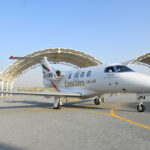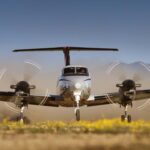ZeroAvia, which is developing hydrogen-electric aviation solutions, has successfully completed its ninth flight test using the Dornier 228 in the skies above the Cotswolds.
The aircraft testing the prototype ZA600 powertrain reached its highest altitude yet, ascending to 5,000 feet MSL, and flying for a total of 20 minutes from Cotswold Airport in Gloucestershire.
In the coming days, ZeroAvia said it would undertake the last flight of this phase of flight testing, when the company will assess the powertrain’s maximum endurance.
ZeroAvia is initially targeting a 300-mile range in 9–19 seat aircraft by 2025, and up to 700-mile range in 40–80 seat aircraft by 2027.
CAA and FAA experimental certificates
Based in the UK and USA, ZeroAvia has already secured experimental certificates for its two prototype aircraft from the CAA and FAA, secured a number of key partnerships with major aircraft OEMs and major global airlines, and is on track for commercial operations in 2025.
The company’s expanding UK operations are supported by grants from the UK’s Aerospace Technology Institute and Innovate UK, and ZeroAvia is part of the UK Government’s Jet Zero Council.
In May, Alaska Airlines presented a Bombardier Q400 regional turboprop to ZeroAvia that will be retrofitted with a hydrogen-electric propulsion system in an effort to expand the reach and applicability of zero emissions flight technology.
Aligning ZeroAvia’s powertrain with the Dash 8-400 airframe will represent a commercially viable zero-emission aircraft with fuel cell engine technology around five times more powerful than what has been demonstrated anywhere to date.
Flight test
“Demonstrating this size of aircraft in flight, powered entirely by novel propulsion, would have been unthinkable a few years ago,” said Val Miftakhov, founder and CEO of ZeroAvia, in May. “Launching this programme puts us on track for a test flight next year, and accelerates our progress toward the future of zero-emission flight for Alaska Airlines and for the world at large.”
ZeroAvia’s recent advancements clear the way for a potential flight of the Q400, also recognized as the Dash 8-400, but also demonstrate rapid progress toward certification of the ZA2000 propulsion system. ZeroAvia has already demonstrated a track-record of world-first flight testing.
In January, ZeroAvia flew a retrofitted 19-seat aircraft with its prototype 600kW hydrogen-electric engine (ZA600). This followed the demonstration flight of a 250kW system in 2020, which at the time of flight was the world’s largest aircraft flown using a novel zero-emission power source.
Subscribe to the FINN weekly newsletter

